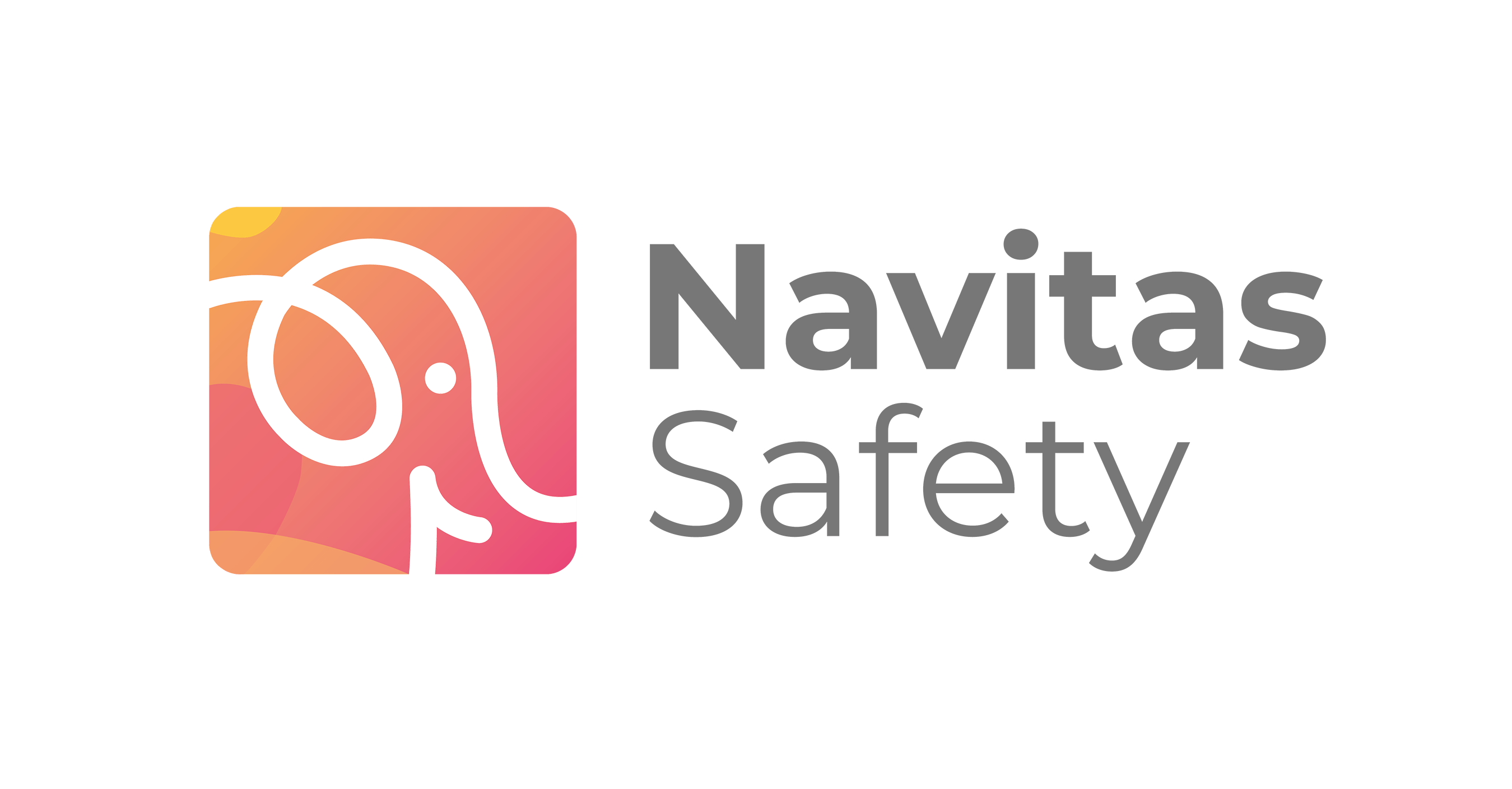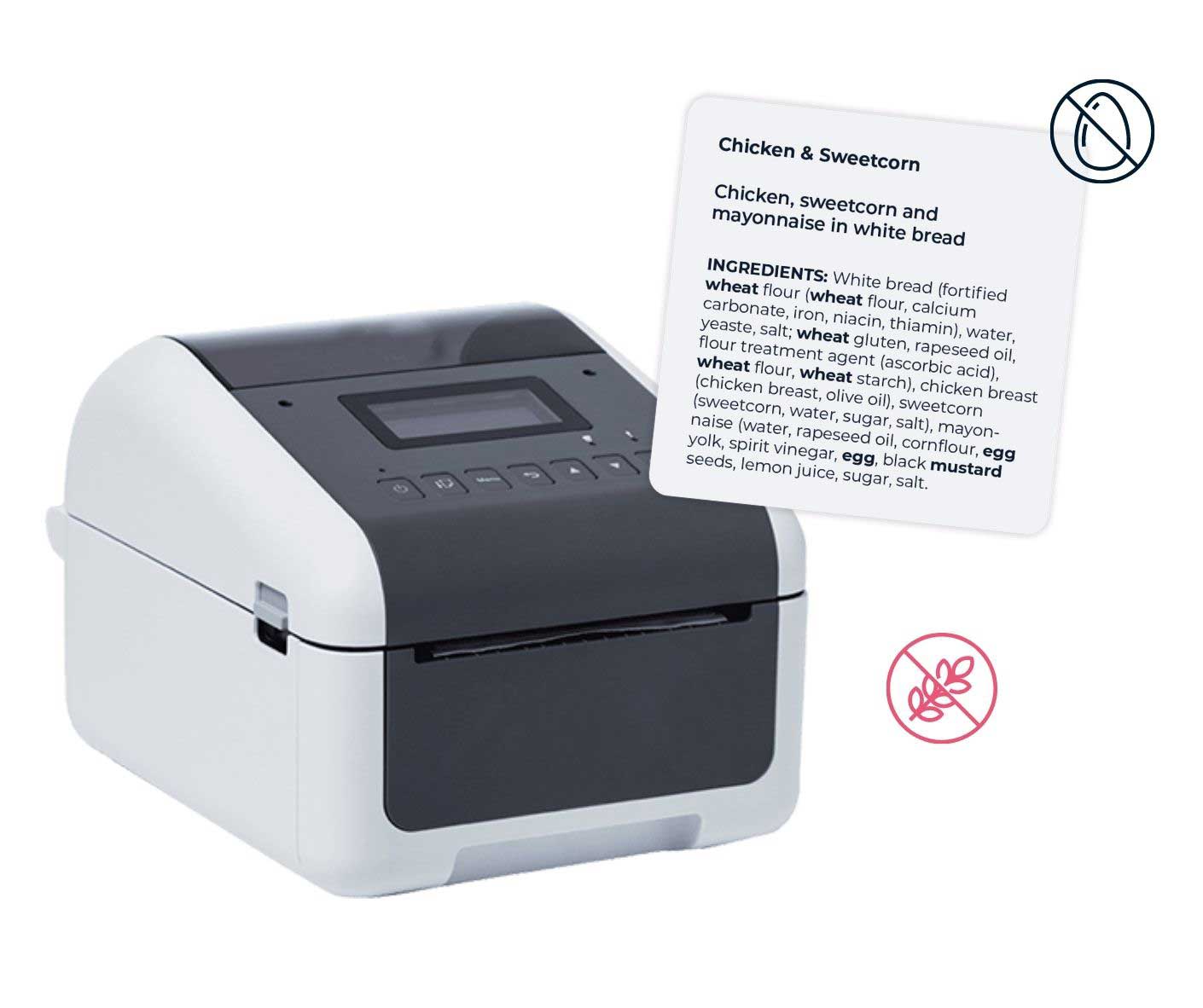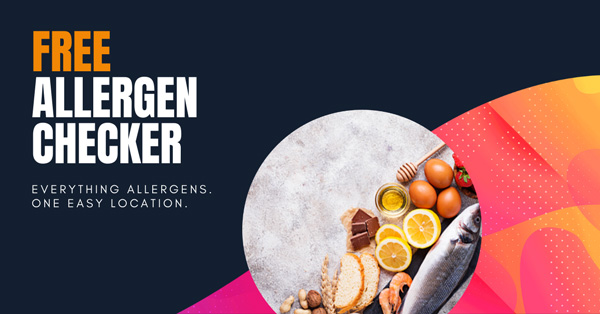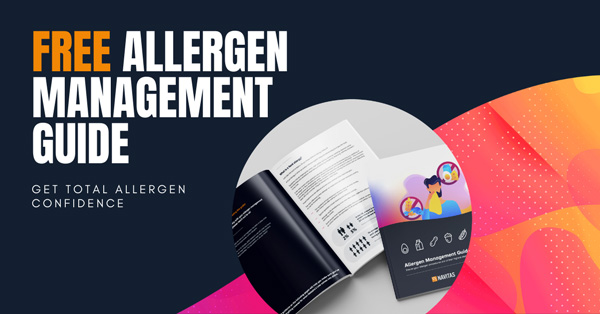Natasha’s Law was introduced in October 2021, improving allergen transparency by establishing the legal requirement to clearly label all allergens on food products that are Pre-Packed for Direct Sale.
As a foodservice business, the safety of customers with allergies is in your hands, so compliance with regulations is crucial. So, we’ve put together a list of key points to help you understand the requirements of Natasha’s Law:
1. ‘Natasha’s Law labels’ aren’t required for everything
No, you don’t have to start running around labelling every last scrap of food in the place – Natasha’s Law is only applicable to foods which are pre-packed for direct sale (PPDS) on the same site they were produced.
Let’s clear up these terms: PPDS means that the product is pre-packed in advance or in anticipation of sale.
Pre-packed means where food is partially or fully enclosed by packaging and cannot be altered prior to selection or purchase without opening or changing the packaging in some way. This largely relates to ‘Grab & Go’ operations (think supermarket meal deals or your coffee shop ready wrapped baguettes), but takeaways and fast food operations will also need to comply. This is because foods may be pre-cooked in bulk and wrapped in readiness for peak times. It also applies to the provision of food samples if they are pre-packed prior to being given out.
PPDS labelling is not required for back of house production activities but there still needs to be a means of traceability from production right through to service to the final consumer in order for the PPDS labels to be accurate.
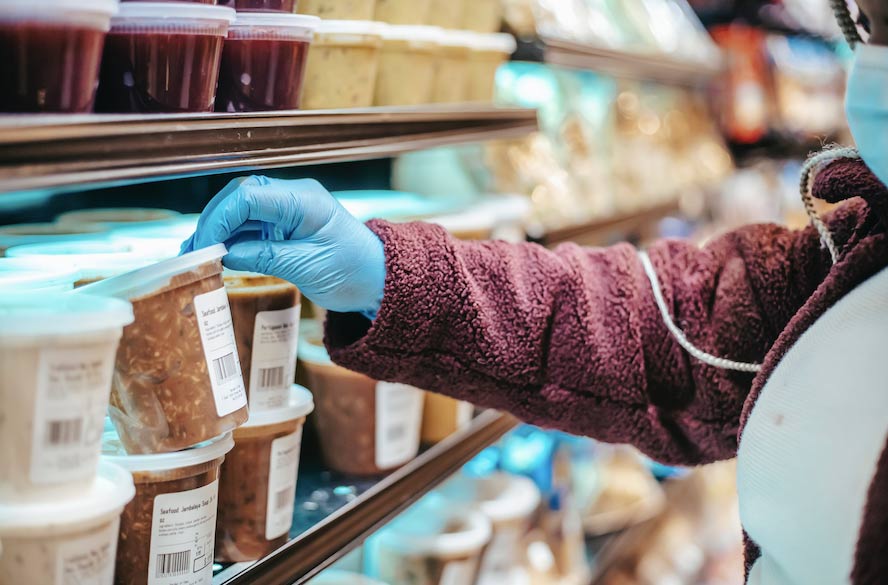
2. Allergen Matrices (or equivalent) will still need to be maintained
Having documented allergy information forms the framework for the accuracy of your PPDS labelling.
You will need to collate allergy information for all the ingredients used in your menu and record these to cover all of your dishes. You can do this on paper or digitally. We’ve got a special Allergen Checker that you can take advantage of to make this as simple as can be for yourself.
You’ll also need to ensure that you have suitable arrangements in place to regularly check the information from suppliers (such as product specifications) and recheck labelling of ingredients on arrival against your documented allergy information to ensure it remains valid.
These documents form part of your company due diligence and should be retained in the same way you would keep temperature and cleaning records. If anything did ever happen and you received a complaint, these would be relied upon in order to prove you had done everything possible to prevent it. Also, this is an essential step towards getting a 5-star food hygiene rating. Think about how you can retrace the information from the PPDS label back through your food production steps to be able to provide the right evidence of compliance.
Explore our seamless allergen management solution - for complete allergen traceability.
3. Labelling Information is split into Mandatory and Voluntary types
So, you know what foods need to be labelled and your Allergen Checker can tell you what is in them all, but what do you actually need on the label?
According to Natasha’s Law, PPDS products MUST be labelled with a description of the item, the full ingredients listing and any of the 14 key allergens highlighted in some way, such as in bold or capitals. This is classed as Mandatory information.
There is a Food Standards Agency Technical Guide available which explains in detail what the labels are required to look like, including how big the font should be. No good having all the information there if it’s too small for anyone to read!
This guide also explains the different types of Voluntary information that can be included on a PPDS label should you choose to do so. It is largely focused on voluntary statements that assist in explaining the possible types of cross-contamination of allergens through processing. If you do wish to offer up this further detail, it is important to remember that this information must not be misleading, ambiguous or confusing and must be based on your risk assessments.
4. The requirements don’t extend to Distance Selling
The Natasha’s Law labelling requirements do not apply to PPDS food sold by means of distance selling, such as food which can be purchased over the phone or on the internet. If you are selling PPDS food this way, you will need to ensure that mandatory allergen information is available to the consumer 1) before they purchase the product and 2) at the moment of delivery.
Remember those Allergen Matrices we were on just about? This is one of the reasons why they are so important!
Note: If you produce foods for other business, additional legal requirements around labelling are already applicable in law.

5. Natasha's Law is necessary for the safety of consumers
The requirement for Natasha’s Law labelling was introduced to provide clarity to consumers and help keep them safe.
And this is 100% necessary, particularly for ‘Grab & Go’ type foods where interaction between consumers and caterers may be very limited due to the type of sale in place, including self-service till points. Where foods are PPDS, sometimes there may be no interaction at all between the customer and a staff member during a transaction so comprehensive allergen labelling is key to communication.
Ultimately, the goal is to ensure customers have everything they need to make informed choices about the food you produce. Safe customers = happy customers.
We hope this gave you some insightful facts on Natasha’s Law. If you’re looking for more labelling information, read our blog on Mandatory Calorie Labelling!
Don't forget to download our Allergen Checker
or our Allergen Management Guide!
If you need any further support with your Allergen Management, Navitas Safety offers a complete Digital Food Safety Solution that will take care of all the technical stuff for you.
An entirely digital allergen tracking and labelling solution with all allergen, menu and supplier data stored in one place? Yes, please.
